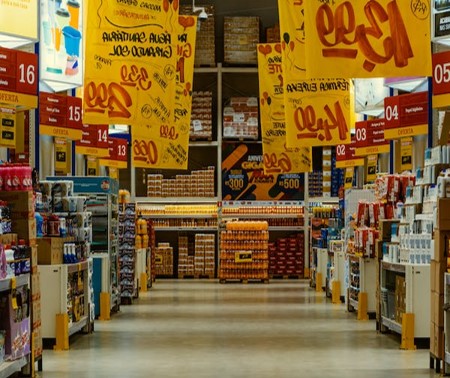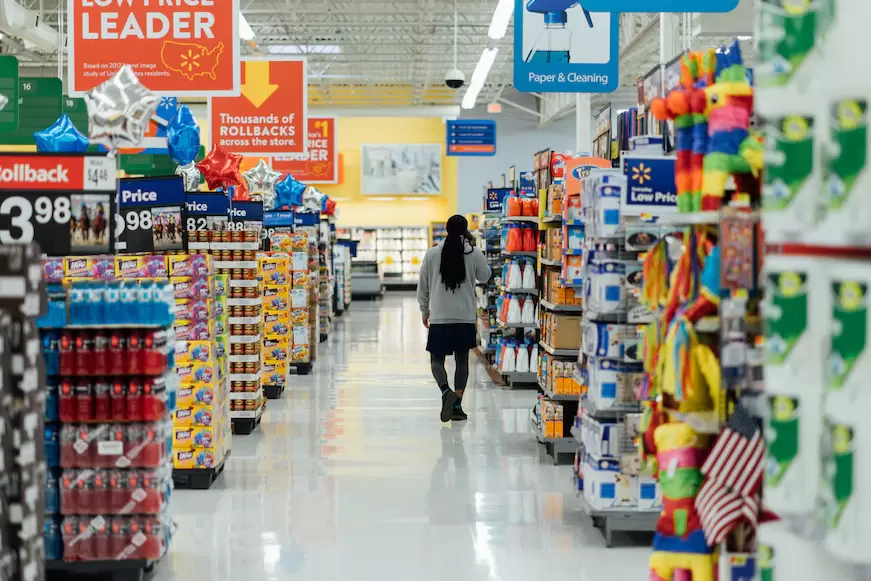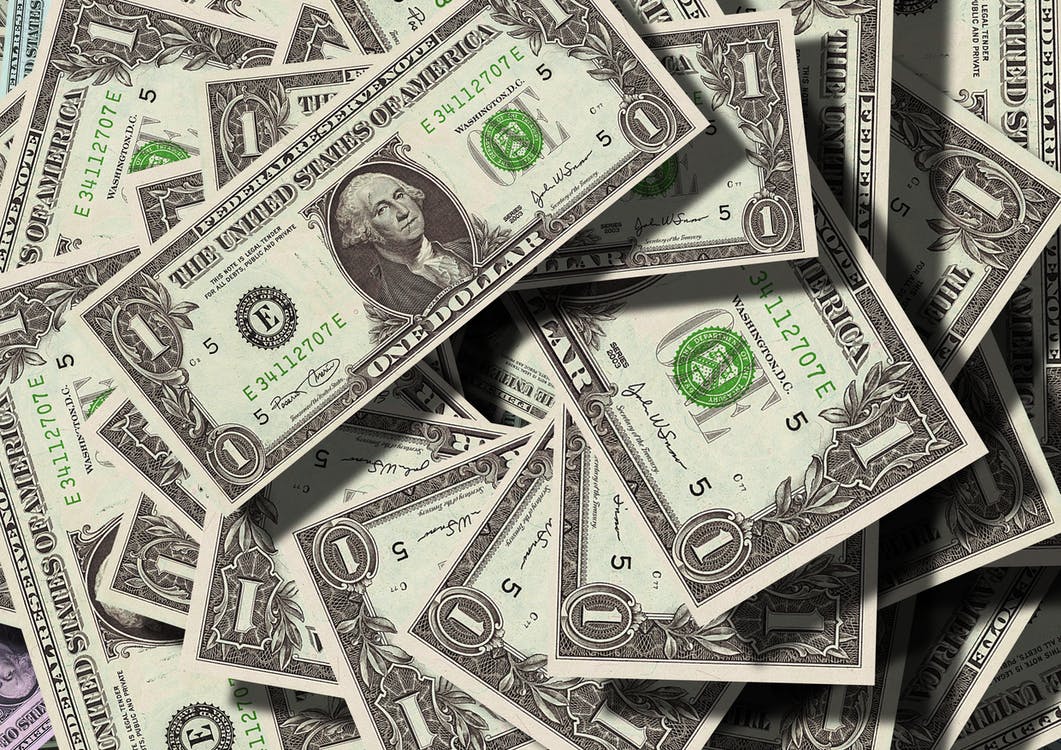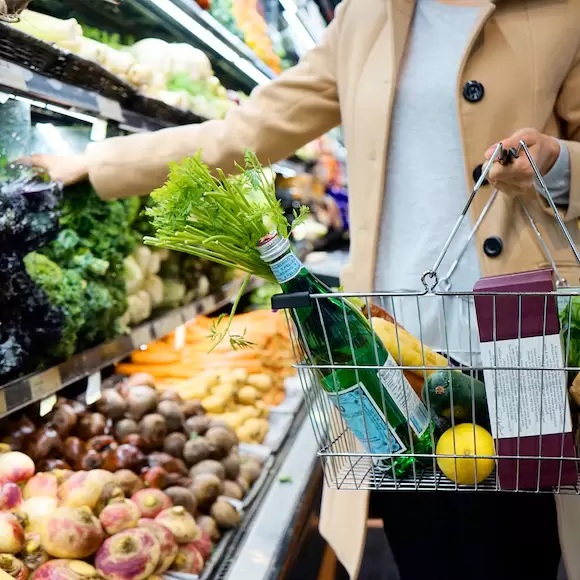|
|
|
September is National Preparedness Month. With winter on the horizon and the status of the economy uncertain, it's a good idea to plan ahead. Creating a surplus of essential supplies is an important way to prepare for the unexpected. Having food and other needed items available can help ease you through any number of undesirable circumstances to include natural disasters, severe weather events, power outages, supply chain issues, or personal tragedies such as the loss of a job or an unexpected illness or injury. Building a surplus doesn't have to cost a lot of money. With careful planning and an organized approach, it's possible to stick to a budget while stocking up on needed items. The following tips have worked well for my family, and I hope you will find them useful as well.
Building a surplus starts with picking a time frame. At the minimum, it's important to have a 72-hour supply of food, water, medication, and other essentials in the event of a natural disaster, power outage, or severe weather event. Beyond that, I recommend starting small and building. over time Once you have a 72-hour reserve of necessities, focus on building a two-week supply. From there you might strive for one month, then three-months, then six-months or more. Your ultimate end goal will depend on your personal budget, needs, desires and available space. Whatever your end goal, having one in mind when you start will help provide a framework for an organized approach to building your surplus. To determine how much of a specific item you need in order to have a 1-month, 3-month, or 6-month supply, write the date on items when you open them. Use this information to figure out how long the item lasts in your household and then to estimate how many you will need to achieve your goal supply.
The danger of building a surplus is buying more than you can actually use before the items expire. There are several factors to keep in mind when determining how much of a surplus you need. These include:
Another important step in building a surplus is organizing your existing supply. Take some time to look through your pantry and other food storage spaces. Identify what you have on hand. Get rid of anything that is outdated or that you know you won't use and organize what's left. When organizing non-perishable food items, I recommend storing like items together so that it is easy to see how many of the same type of item you have on hand. Store the oldest items (those that will expire first) at the front to be used first and avoid unnecessary waste.
In addition to food, it's a good idea to stock up on other items you use regularly. This can include prescription and over-the-counter medications, toiletries and other personal hygiene items, cleaning supplies, paper products, and other consumable items.
You will be amazed how quickly, easily, and painlessly (budgetarily speaking) you can build a surplus by buying two replacement items for every one item you use. Use up a bottle of ketchup, buy two. Use up a bottle of shampoo, buy two. Use up a can of tuna, buy two. You get the idea. My husband and I began implementing this practice as newlywed college students, and we were impressed and pleased at how easy (and affordable) it was to stock our cupboards using this simple method.
This may seem like a no-brainer, but it takes effort and planning to get the best prices for the items you need. It means looking at weekly fliers (either on paper or electronically) and planning accordingly. You can decrease the amount you spend on building a surplus significantly by waiting for items to go on sale and stocking up on the brands and products you use when the price is right.
You probably know that certain items are on sale at certain times of the year. What you may not be aware of is the specifics of the annual cycle with regard to which items are on sale each month of the year. Knowing this can help you to plan ahead and stock up on specific items when they are at their lowest price of the year. Utilize Coupons, Rebates, and Savings AppsThese days saving on groceries and other essentials is easier than ever with the myriad of savings apps and rebate programs available. By spending a few minutes before and after you shop to see what special deals are available and then to scan your receipts can increase your savings significantly with coupons and rebates.
Often the larger the quantity, the lower the cost per unit. Admittedly, this is not always the case, but it is certainly the case much of the time and sometimes the savings are significant. Now that we are empty-nesters I sometimes choose to buy the smaller version of a product because the larger version won't get used before it spoils, but I've also discovered that in many cases larger quantities can be divided into smaller portions, thus preserving both the savings and the food item. Vacuum sealers are a great way to divide and preserve larger portions.
Each month we take any leftover money in our food budget and roll it over into another budget category that we call Grocery Surplus. We then use this money to add to our surplus of food and other essential items. This is also where my grocery rebate money is stashed. After saving in this manner for a few months, I recently had enough money set aside to buy a supply of freeze-dried foods for long-term storage. On another occasion, I spent my savings on 5-gallon water storage containers. Other times I've used the money to stock my freezer. AFFILIATE DISCLOSURE: This post contains affiliate links. This just means that there are product suggestions included within the text. Should you click on one of the links and decide to make a purchase, I will receive a small commission. I only suggest products I love and have experience with that are directly related to the content in this post. You can view my Disclosure Statement for more information. Thank you for your support!
It is not necessary or desirable to store a surplus of every item on your shopping list. With regard to food, I recommend that you begin by building a surplus of staple items that form the basis for much of your family's diet - things like flour, rice, oats, salt, sugar, vegetables and fruits (canned, frozen, or freeze-dried), meats (canned, frozen, or freeze-dried), etc. Next, focus on items your family uses regularly and/or in large quantities. Even if you have no interest in establishing long-term food storage, I recommend having at least one #10 can of powdered milk and powdered eggs because these will allow you to do a lot more with the food you have on hand in a situation where stores are closed, or perishable foods are difficult to obtain. I have tried a variety of freeze-dried foods, and the one thing I do not recommend is freeze-dried shredded cheese. It just doesn't reconstitute in a palatable fashion (in my opinion). Building a surplus of groceries and other essential items brings peace of mind both in emergencies and on a daily basis. Apply these tips to gradually and affordably increase your stockpile.
11 Comments
Welcome to part 2 of my series on how to save money on groceries and other essentials. In this post the focus will be on digital savings. I'm not even going to pretend like I know every single app or extension available for saving digitally. Instead, I'm just going to share some apps and extensions that have worked well for me as well as some suggestions for how to use these tools in tandem to increase savings.
Most grocery and pharmacy chains have a savings app. Some are definitely better than others (Kroger, Target, Walgreens), but each offers ways to save money on groceries and other essentials. To utilize the savings available on a store's app, you will have to have an account. When you sign up for an account, you will be issued a shopper's card, and it is generally through scanning your shopper's card that you are able to access available savings. My favorite local grocery store is a Kroger affiliate, and I LOVE their app. I'll share my favorite features, many of which are common across the best grocery store apps. If you have not done so, I encourage you to explore your store's app for these (and possibly other) features. Store App features to look for:
In addition to your store's savings app, another source for digital coupons is the coupons.com app. Link it to your store's loyalty account, and load coupons directly onto your shopper's card. If you prefer paper coupons, you can print those as well. It is not uncommon for my grocery store savings app to have 300+ coupons available. That's a lot to look through, s0 I recommend utilizing the search and sorting features when downloading digital coupons. Use the search feature to look for coupons for specific items. Search by brand name (Tide, Kraft, Tostitos) or by the type of item (toothpaste, sour cream, peanut butter). Searching for coupons for the items you plan to buy is also a good way to avoid the temptation to buy something you normally wouldn't just because you have a coupon. When it comes to sorting, I like to begin by adjusting the settings to show me the newest coupons first. You can also sort for popular coupons, coupons that are expiring soon, and coupons that are deemed the best value. Additionally, I like to look at a category called "Special Savings" which includes the weekly digital deals and other special or limited offers. My favorite special offers include:
Receipt scanning apps seem almost too good to be true. You use your phone's camera to snap a photo of your receipt and upload it to the app, and in return you get a reward in the form of a rebate or gift card. You may be wondering how these companies can afford to pay you for simply sharing your receipt with them. The answer is that they get paid for the information they collect. They're essentially conducting market research, and companies are interested in the demographic information and other pertinent data they randomly collect. Be assured that they are not collecting or sharing private information; they are tracking shopping trends.
Several receipt scanning apps offer rewards for sharing the app with others. In such cases, both the sharer and the person signing up receive a bonus either in the form of cash or points (which can be redeemed for gift cards). In the section below, I will share my invite link where applicable. Should you choose to use my link to sign up for an app, I will receive a reward - and so will you!
In my experience, receipt scanning apps take two basic forms: cash back and points apps. I have only tried a handful of these apps personally, so I'm just going to share the ones that have worked well for me.
Ibotta Referral Code:
gbuobim Use the referral code when signing up and get $10 when you redeem your first offer:
Fetch Referral Code:
NGYU5A Use the referral code and receive a minimum of 2,000 additional points when you scan your first receipt.
ReceiptJAR Referral Code:
SHERS9H38 Use the referral code and receive an additional 200 points when you scan your first receipt.
Shopkick Referral Code:
KIND185754 Use the referral code and receive 250 bonus kicks when you sign up for Shopkicks.
If you're going to use multiple receipt scanning apps, you will want to develop a system for scanning receipts. I do it as soon as I get home from the store once I'm done putting my purchases away, but I have a friend who saves her receipts and scans them all once a week. Whatever method you choose, I recommend scanning them in a sort of assembly line. Start by lining up your receipts on the kitchen counter or some other flat surface. Open an app and scan all of the receipts to that app. Then open another app and scan all of the applicable receipts to the second app, and so forth. This makes it easy to keep track of which receipts you've scanned to which app.
Online extensions are buttons you add to your browser's taskbar.
Rakuten Referral Link:
Use this link to join Rakuten, and we will both earn $30 when you make your first purchase of $30 or more using the app or online extension.
While any one of these digital savings tools will help you save money on groceries and other essentials, combining them can yield even more impressive results. My top three tips for maximizing savings are as follows:
Maximizing your savings on groceries and other essentials using digital tools takes a bit of organization, but it is well worth the effort. I personally love finding new, effective ways to save money, and I get a real sense of satisfaction from getting a good deal. I hope you find these suggestions useful, and I invite you to share your favorite ways to save in the comments section below.
|
Archives
November 2022
Categories
All
|
Proudly powered by Weebly








 RSS Feed
RSS Feed